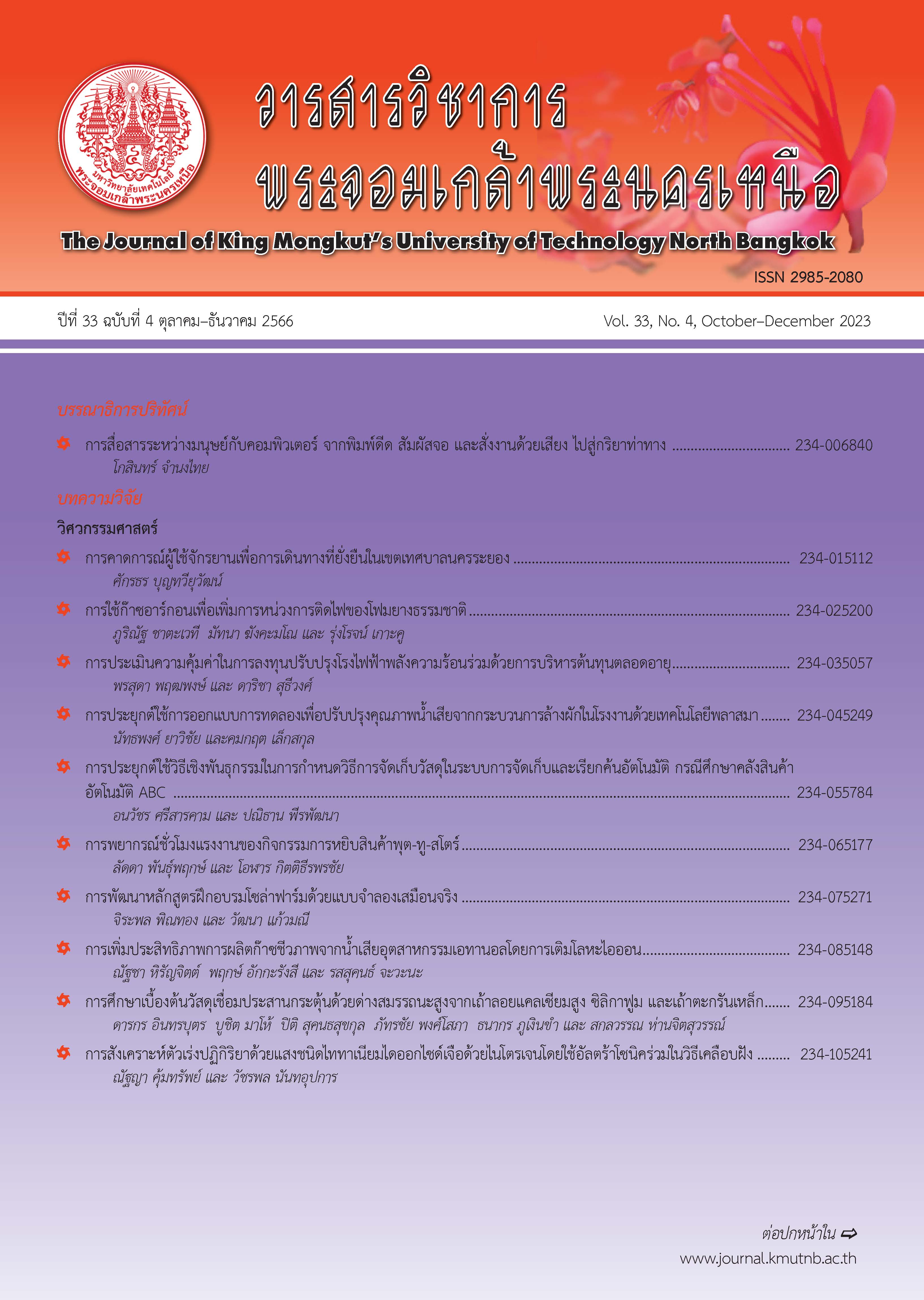ปัจจัยผลกระทบความใกล้ชิดที่ส่งผลต่อการเติบโตของสตาร์ทอัพในการบ่มเพาะธุรกิจ
Main Article Content
บทคัดย่อ
วิกฤตการณ์โรคระบาดอุบัติใหม่ ส่งผลต่อความถดถอยทางเศรษฐกิจ และความเหลื่อมล้ำทางสังคม โดยเฉพาะการเข้าถึงทรัพยากรในการดำเนินธุรกิจขนาดเล็กอย่างสตาร์ทอัพ ด้วยเหตุนี้หน่วยงานที่มีบทบาทเสมือนตัวกลางเชื่อมโยงระหว่างผู้ประกอบการ นักลงทุน และผู้บริโภค จึงทุ่มเทความพยายามเพื่อบ่มเพาะ ส่งเสริมการเติบโตและการอยู่รอด โดยสนับสนุนโครงสร้างพื้นฐาน อาทิ ทรัพยากรทางปัญญา เครือข่าย สถานที่ดำเนินกิจการ รวมถึงโอกาสจากนักลงทุน แต่จากการทบทวนวรรณกรรมที่ตีพิมพ์ในวารสารระดับนานาชาติ ผู้วิจัยพบว่า ในปรากฏการณ์บ่มเพาะ แม้ว่าสตาร์ทอัพเข้าร่วมทุกกิจกรรมตามกระบวนการ แต่ยังไม่สามารถสร้างโอกาสในการเติบโตเป็นผลมาจากปัจจัยแฝงเร้น เรียกว่า ความสัมพันธ์เชิงความใกล้ชิดงานวิจัยนี้จึงมีวัตถุประสงค์เพื่อศึกษา ปัจจัยผลกระทบความใกล้ชิดที่ส่งผลต่อการเติบโตของสตาร์ทอัพในการบ่มเพาะธุรกิจ ผ่านแนวคิดความใกล้ชิด 5 มิติ ประกอบด้วย ความใกล้ชิดเชิงความรู้ทางปัญญา ความใกล้ชิดเชิงสังคม ความใกล้ชิดเชิงภูมิศาสตร์ ความใกล้ชิดเชิงองค์การ และความใกล้ชิดเชิงสถาบัน ด้วยวิธีการวิเคราะห์ถดถอยโลจิสติคทวิเก็บข้อมูลจากลุ่มตัวอย่างจำนวน 68 สตาร์ทอัพที่เคยผ่านโปรแกรม ผลการวิจัยพบว่า ความใกล้ชิด 3 ด้านหลักที่ส่งอิทธิพลทางตรงต่อการเติบโตของสตาร์ทอัพในแง่ของการสร้างความร่วมมือกับพันธมิตร และการสร้างธุรกิจ คือ ความใกล้ชิดเชิงองค์ความรู้ความใกล้ชิดเชิงสังคม และความใกล้ชิดเชิงภูมิศาสตร์ บทความนี้เป็นส่วนหนึ่งของดุษฎีนิพนธ์ เรื่อง ปัจจัยผลกระทบความใกล้ชิดที่ส่งผลต่อการเติบโตของสตาร์ทอัพในการบ่มเพาะธุรกิจ
Article Details

อนุญาตภายใต้เงื่อนไข Creative Commons Attribution-NonCommercial-NoDerivatives 4.0 International License.
บทความที่ลงตีพิมพ์เป็นข้อคิดเห็นของผู้เขียนเท่านั้น
ผู้เขียนจะต้องเป็นผู้รับผิดชอบต่อผลทางกฎหมายใดๆ ที่อาจเกิดขึ้นจากบทความนั้น
เอกสารอ้างอิง
J. A. Schumpeter, “History of Economic Analysis,” New York: Oxford University Press, 1954.
J. Hudson, H.F. Khazragui, “Into the valley of death: Research to innovation,” Drug Discovery Today, vol. 18, no. 13, pp. 610–613, 2013.
S. A. Lundqvist, “An exploratory study of enterprise risk management: Pillars of ERM,” Journal of Accounting, Auditing & Finance, no. 3, pp. 393–429, 2014.
M. T. Hansen, H. W. Chesbrough, N. Nohria, and N. D. Sull., “Networked incubators. Hothouses of the new economy,” Harvard business review, vol. 78, no. 5, pp. 74–84, 2000.
V. Lasrado, S. Sivo, C. Ford, T. O’Neal, and I. Garibay, “Do graduated university incubator firms benefit from their relationship with university incubators?” The Journal of Technology Transfer, vol. 41(2), pp. 205–219, 2016.
M. V. Zedtwitz, “Classification and management of incubators: aligning strategic objectives and competitive scope for new business facilitation,” International Journal of Entrepreneurship and Innovation Management, vol. 3, no. 1–2, pp. 176–196, 2003.
J. L. Scillitoe and A. K. Chakrabarti, “The role of incubator interactions in assisting new ventures.” Technovation, vol. 30, no. 3, pp 155–167, 2010.
B, Pettersson and A. Götsén, “Business Incubators - the savior of startups? : An exploratory study on knowledge acquisition in a business incubator from a startup perspective,” 2016.
M. Silva, J. Howells, and M. Meyer, “Innovation intermediaries and collaboration: knowledgebased practices and internal value creation,” Research Policy, vol. 47, no. 1, pp. 70–87, 2018.
K. Mason and R. Chakrabarti, “The role of proximity in business model design: Making business models work for those at the bottom of the pyramid.” Industrial Marketing Management, vol. 61, pp. 67–80, 2017.
C. Cantù, “Entrepreneurial knowledge spillovers: Discovering opportunities through understanding mediated spatial relationships.” Industrial Marketing Management, vol. 61, pp. 30-42, 2017.
P. A. Balland, R. Boschma, and K. Frenken, “Proximity and innovation: from statics to dynamics,” Regional Studies, vol. 49, no. 6, pp. 907–920, 2015.
R. Boschma, “Proximity and Innovation: A Critical Assessment.” Regional Studies, vol. 39, no. 1, 2005.
J. R. Baum, E. A. Locke, and K. G. Smith, “Multidimensional Model of Venture Growth.” Academy of Management Journal, vol. 44 no. 2, pp. 292–303, 2001.
OECD. (n.d.). (2020, March). Start-up and entrepreneurship [Online]. Available: http:// www.oecd.org/sti/outlook/eoutlook/stipolicy profiles/competencestoinnovate/start upandentrepreneurship.htm
H. Etzkowitz, “Innovation in innovation: The triple helix of university-industry-government relations,” Social science information, vol. 42, no. 3, pp. 293–337, 2003.
H. Lundberg, “Triple Helix in practice: The key role of boundary spanners,” European Journal of Innovation Management, vol. 16 no. 2, pp. 211–226, 2013.
S. M. Hackett and D. M. Dilts, “Inside the black box of business incubation: Study B-scale assessment, model refinement, and incubation outcomes.” The Journal of Technology Transfer, vol. 33, no. 5, pp. 439–471, 2008.
C. Campbell, R. C. Kendrick, and D. S. Samuelson, “Stalking the latent entrepreneur: Business incubators and economic development,” Economic Development Review, vol.3, no.2, pp. 43–49, 1985.
L. Levakova, “The role of business incubators in supporting the SME start-up,” Acta Polytechnica Hungarica, vol. 9, no.3, pp. 85–95, 2012.
B. Nooteboom, W. V. Haverbeke, G. Duysters, V. Gilsing, and A. V. Oord, “Optimal cognitive distance and absorptive capacity,” Research Policy, vol. 36, no. 7, pp. 1016–1034, 2007.
R. Boschma and K. Frenken, “The Spatial Evolution of Innovation Networks: A Proximity Perspective,” Papers in Evolutionary Economic Geography (PEEG), Utrecht University, Department of Human Geography and Spatial Planning, Group Economic Geography, vol. 39, no. 1, pp. 61–74, 2009.
J. Knoben and L. A. G. Oerlemans, “Proximity and Inter-organizational collaboration: A literature review,” International Journal of Management Reviews, vol. 8, no.2, pp. 71–89, 2006.
F. Huber, “On the role and interrelationship of spatial, social and cognitive proximity: Personal knowledge relationships of r&d workers in the cambridge information technology cluster,” Regional Studies, vol. 46, no. 9, pp. 1169–1182, 2012.

